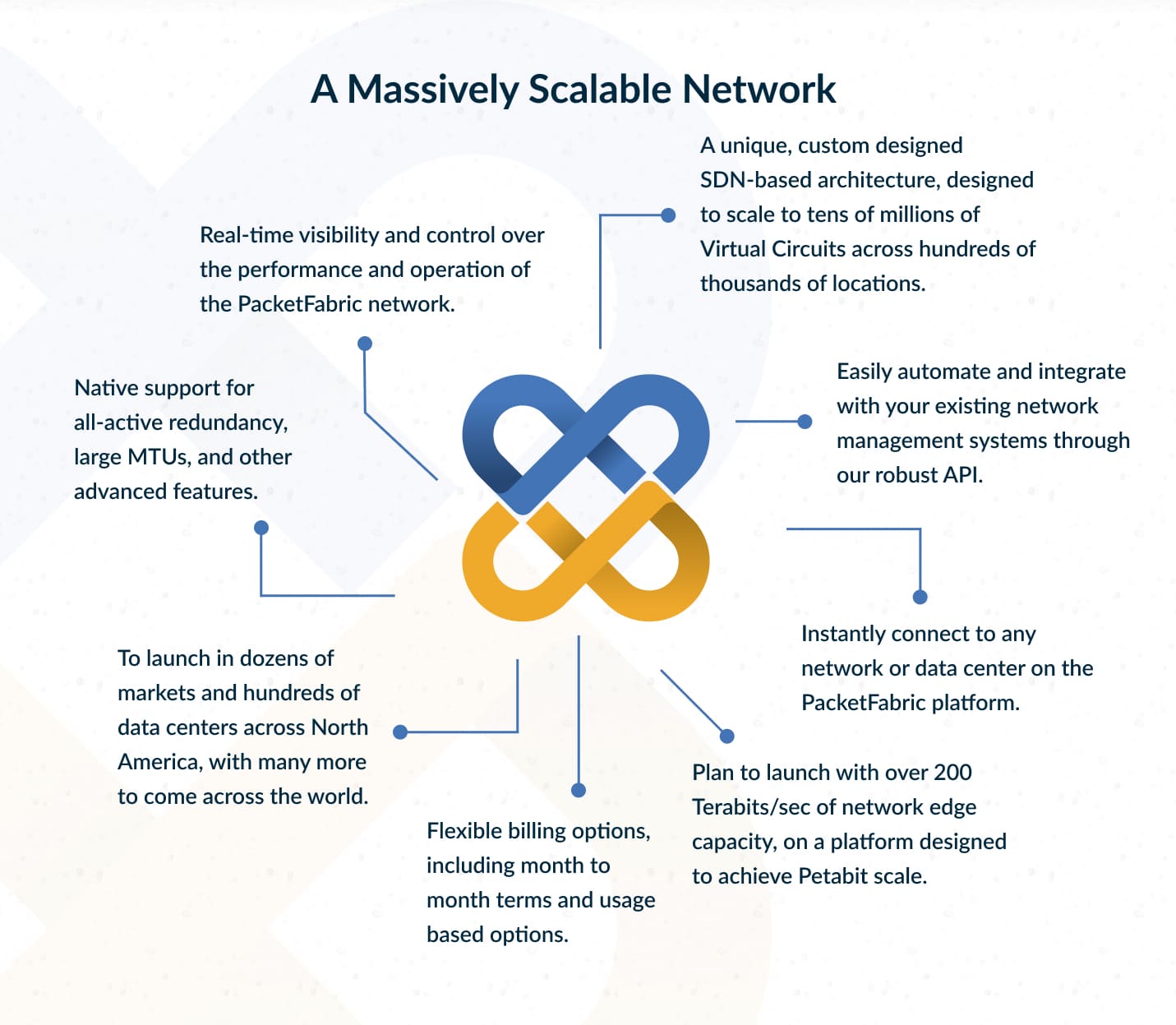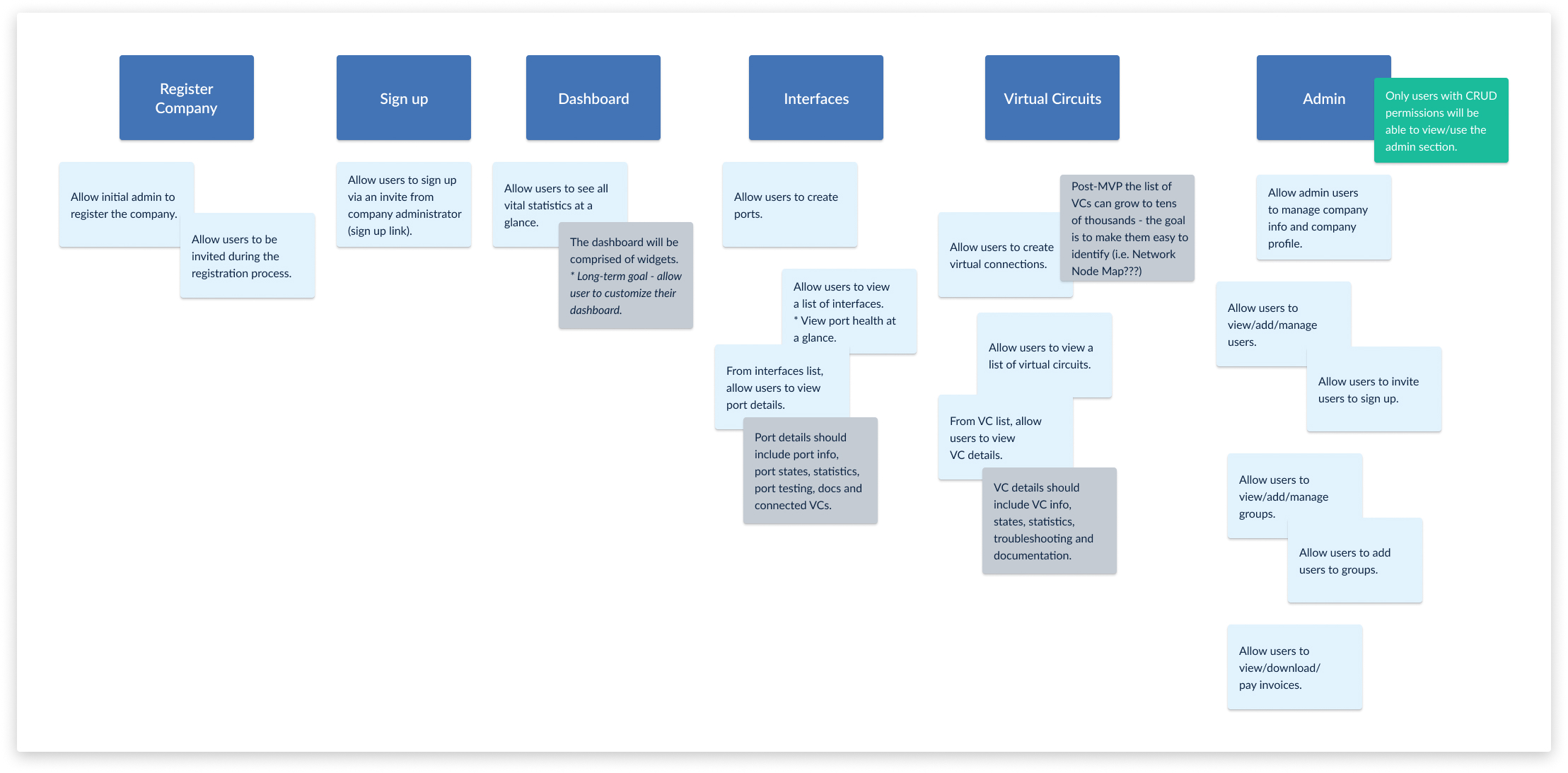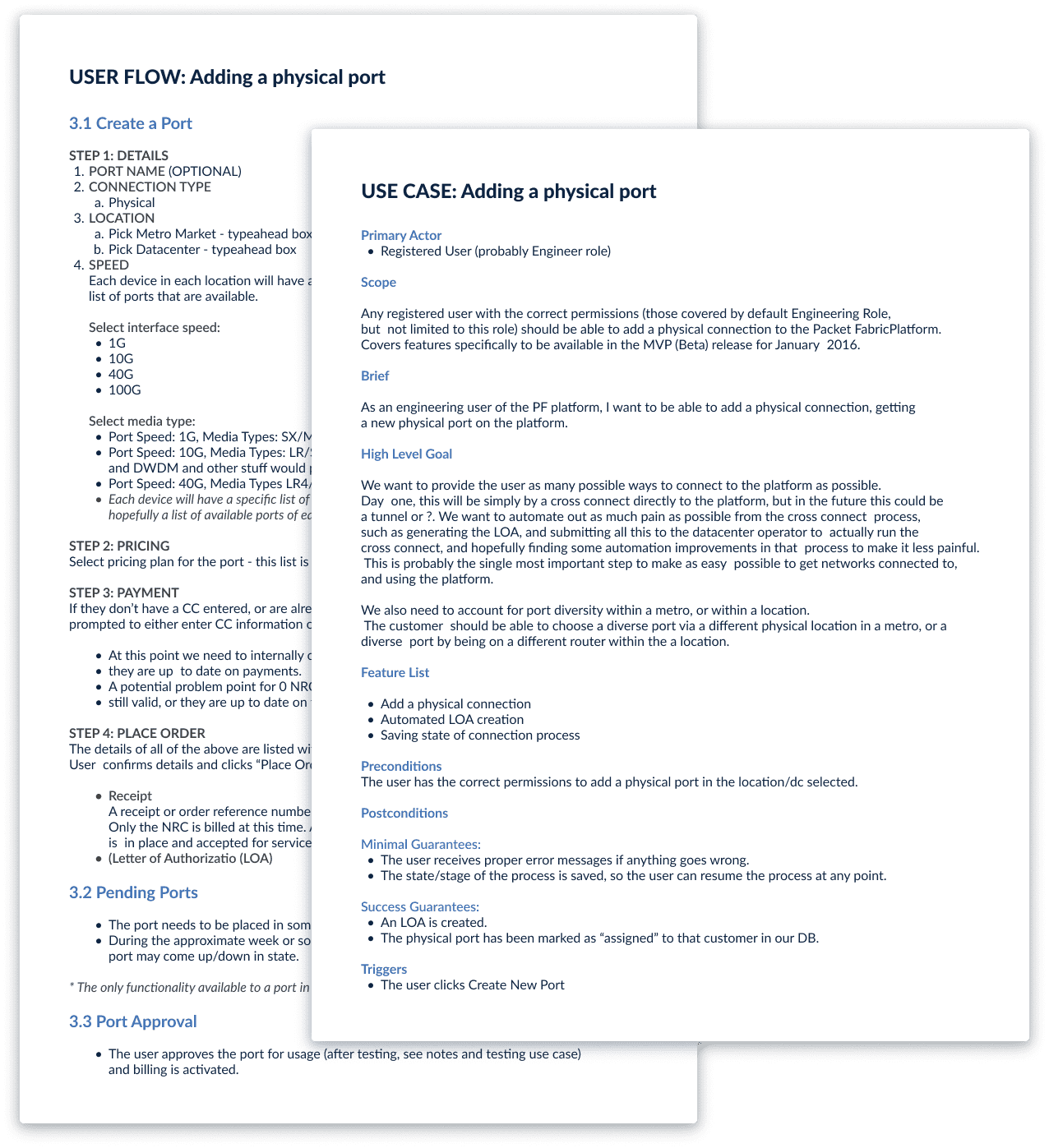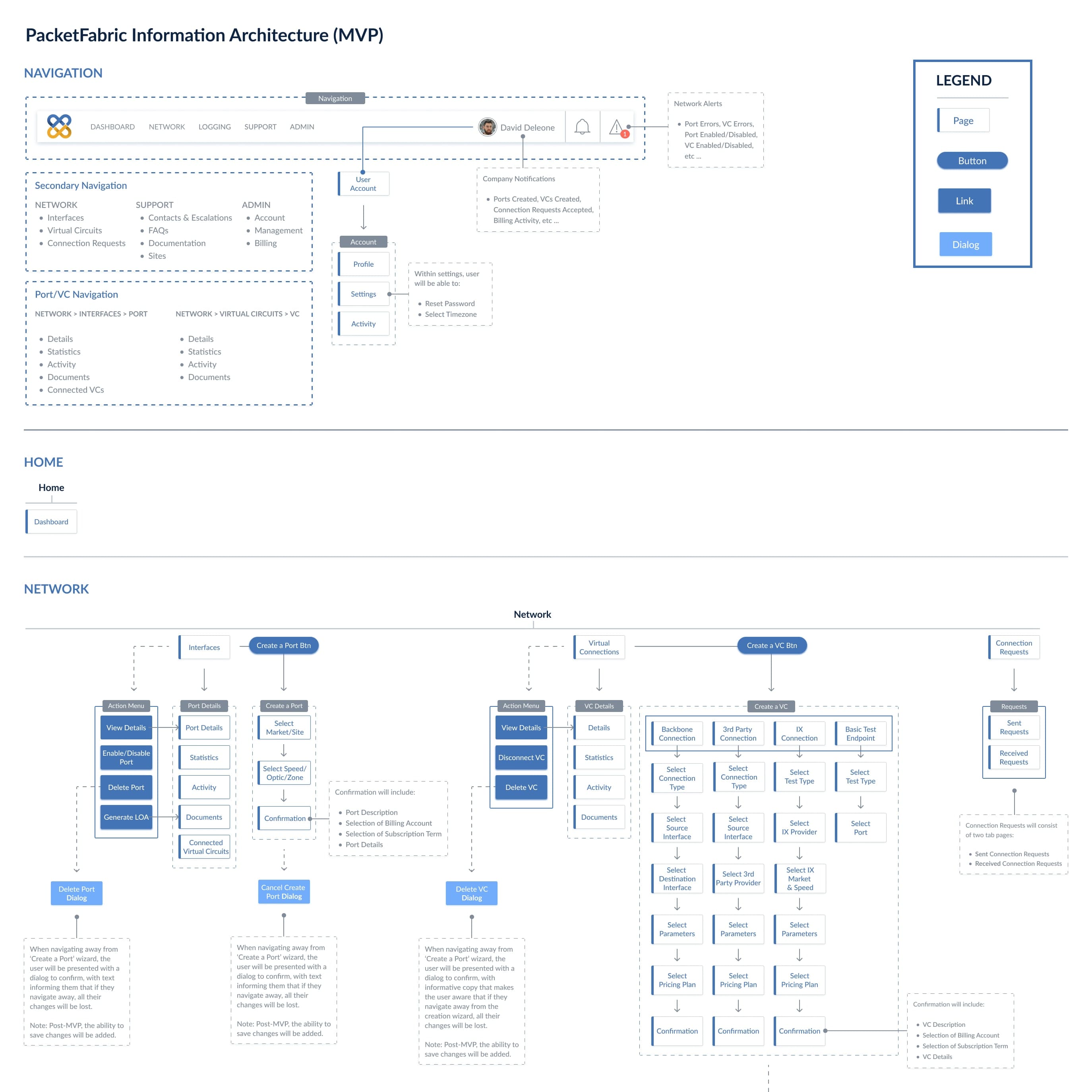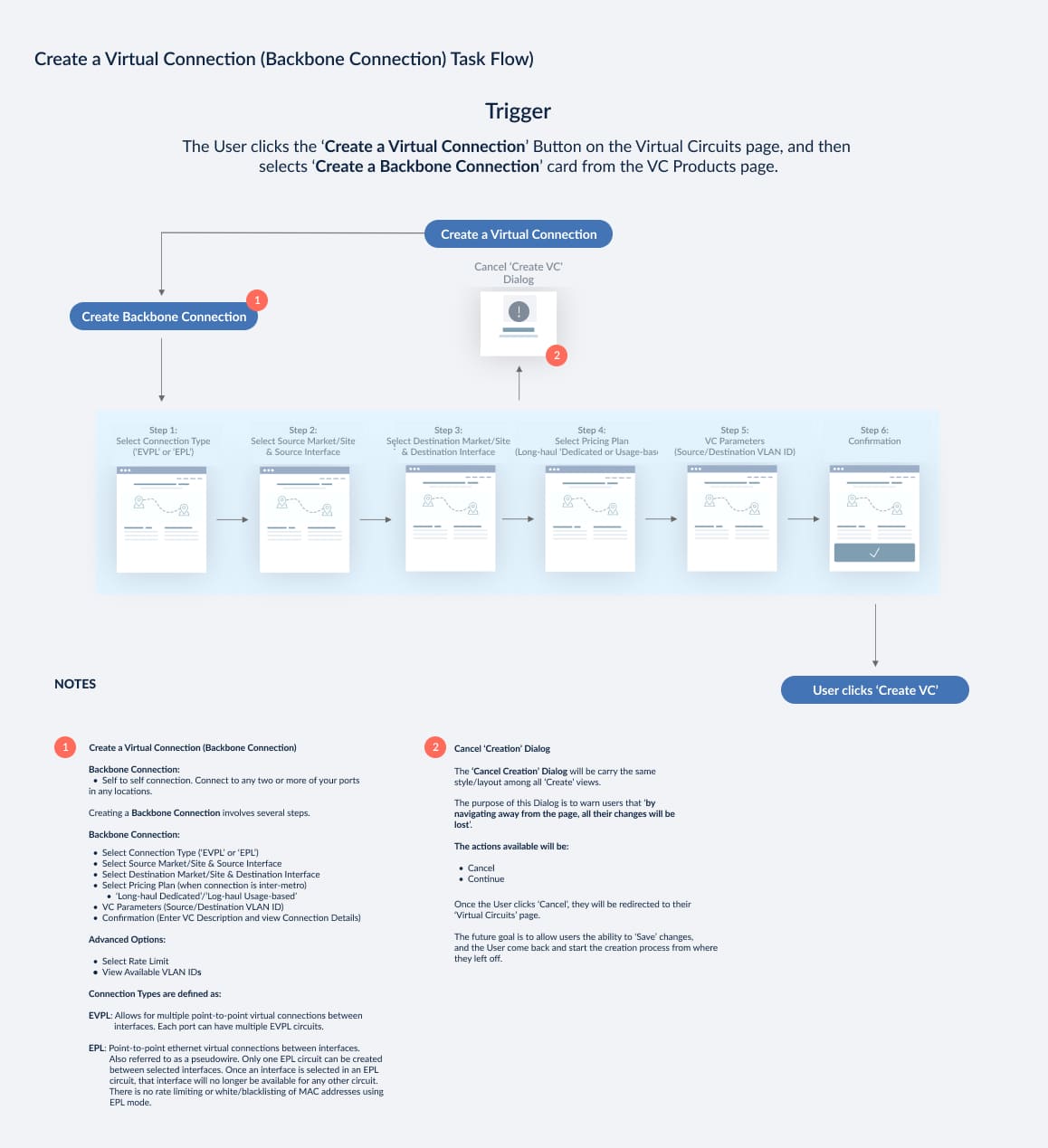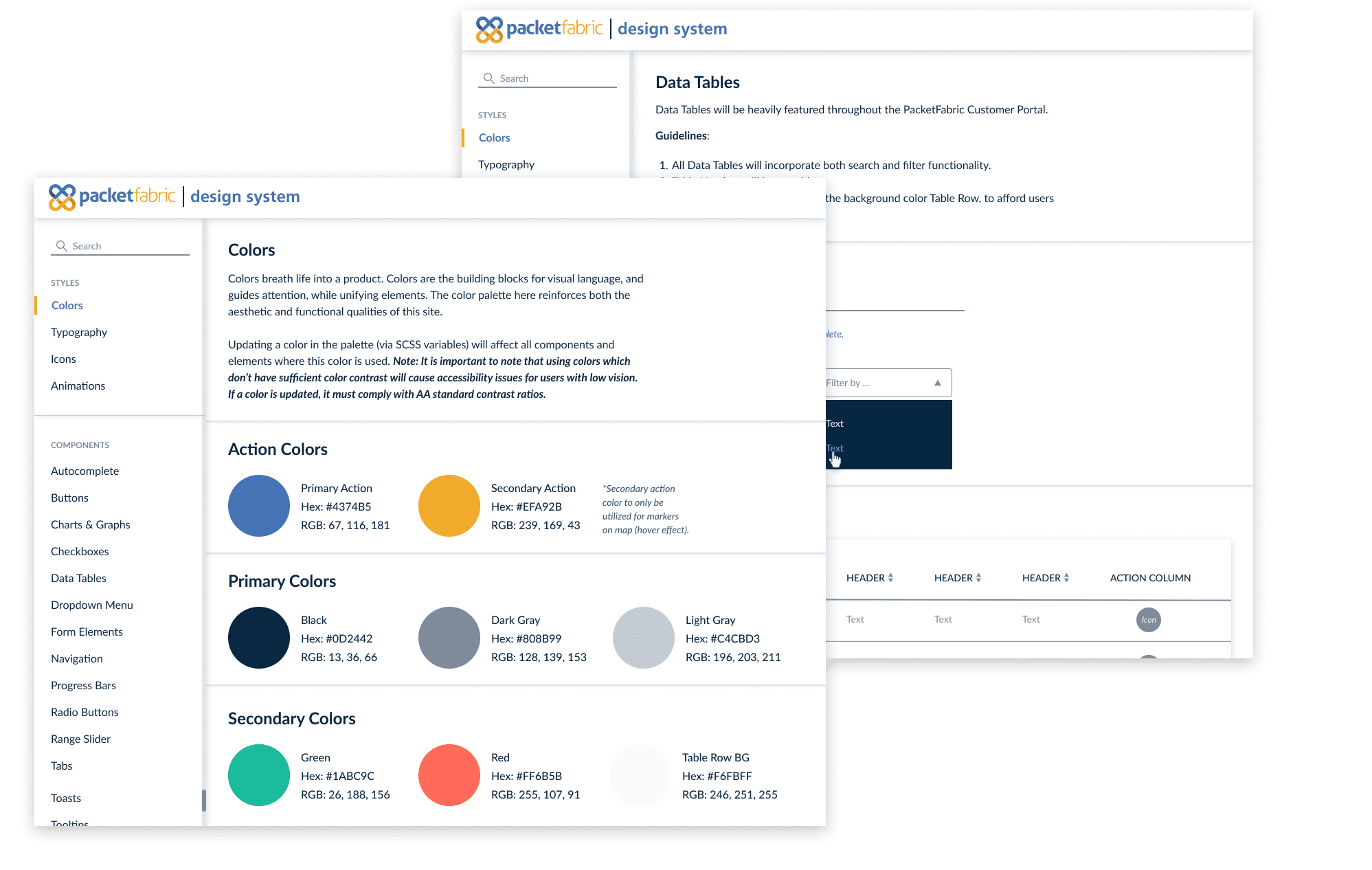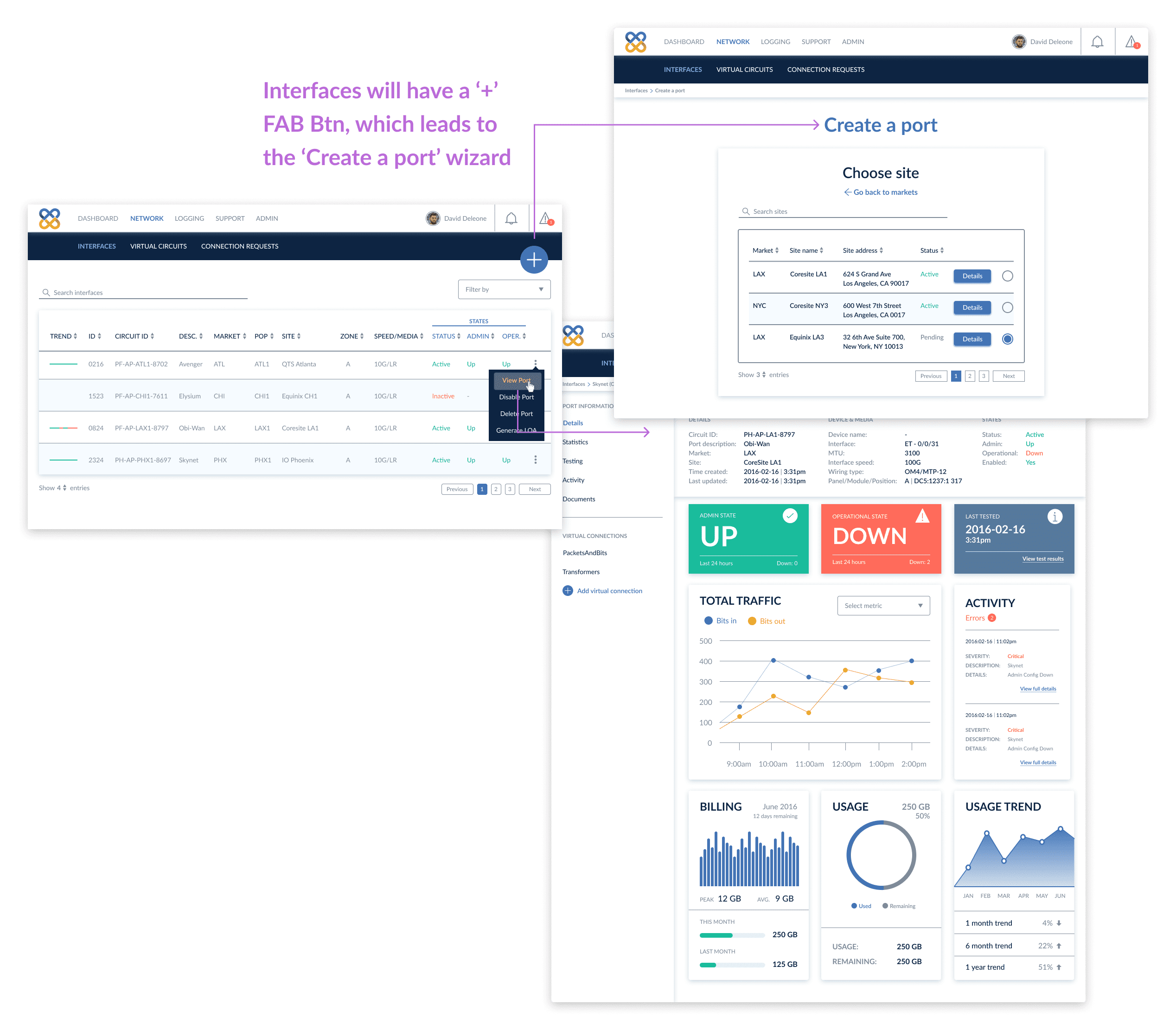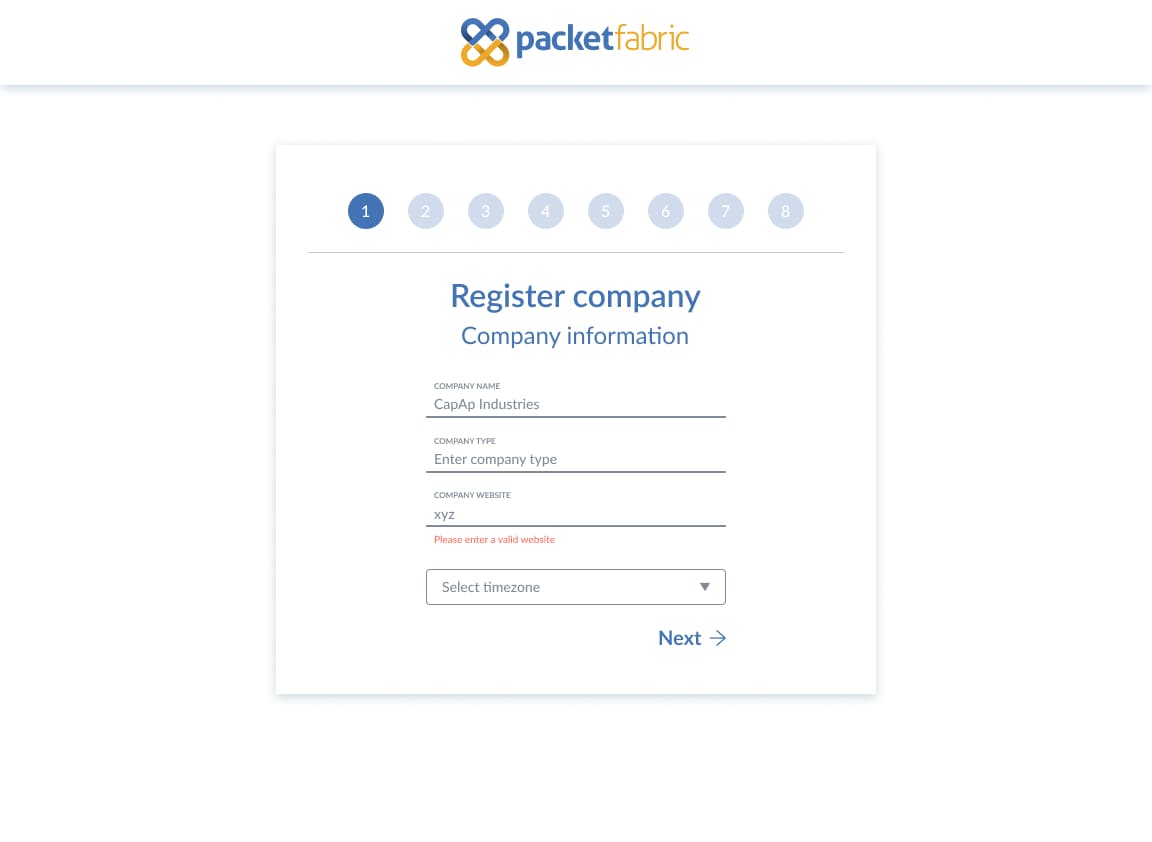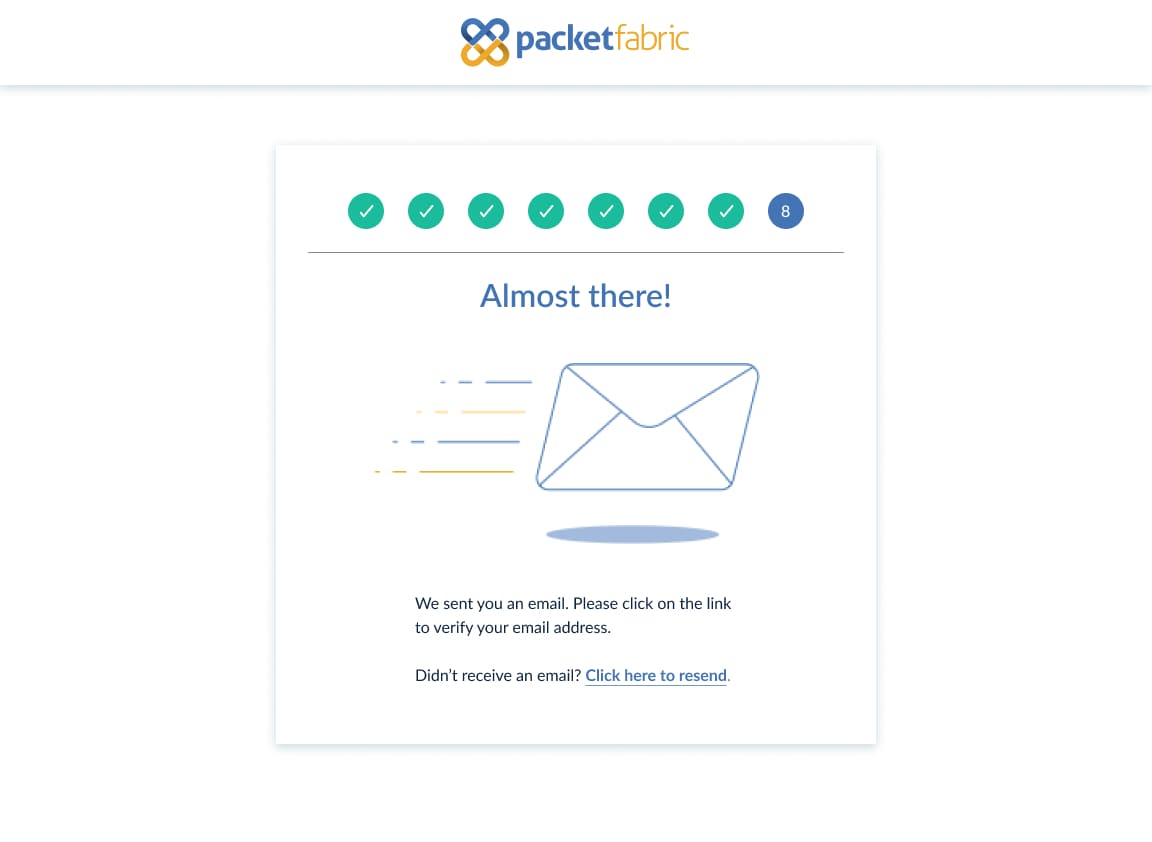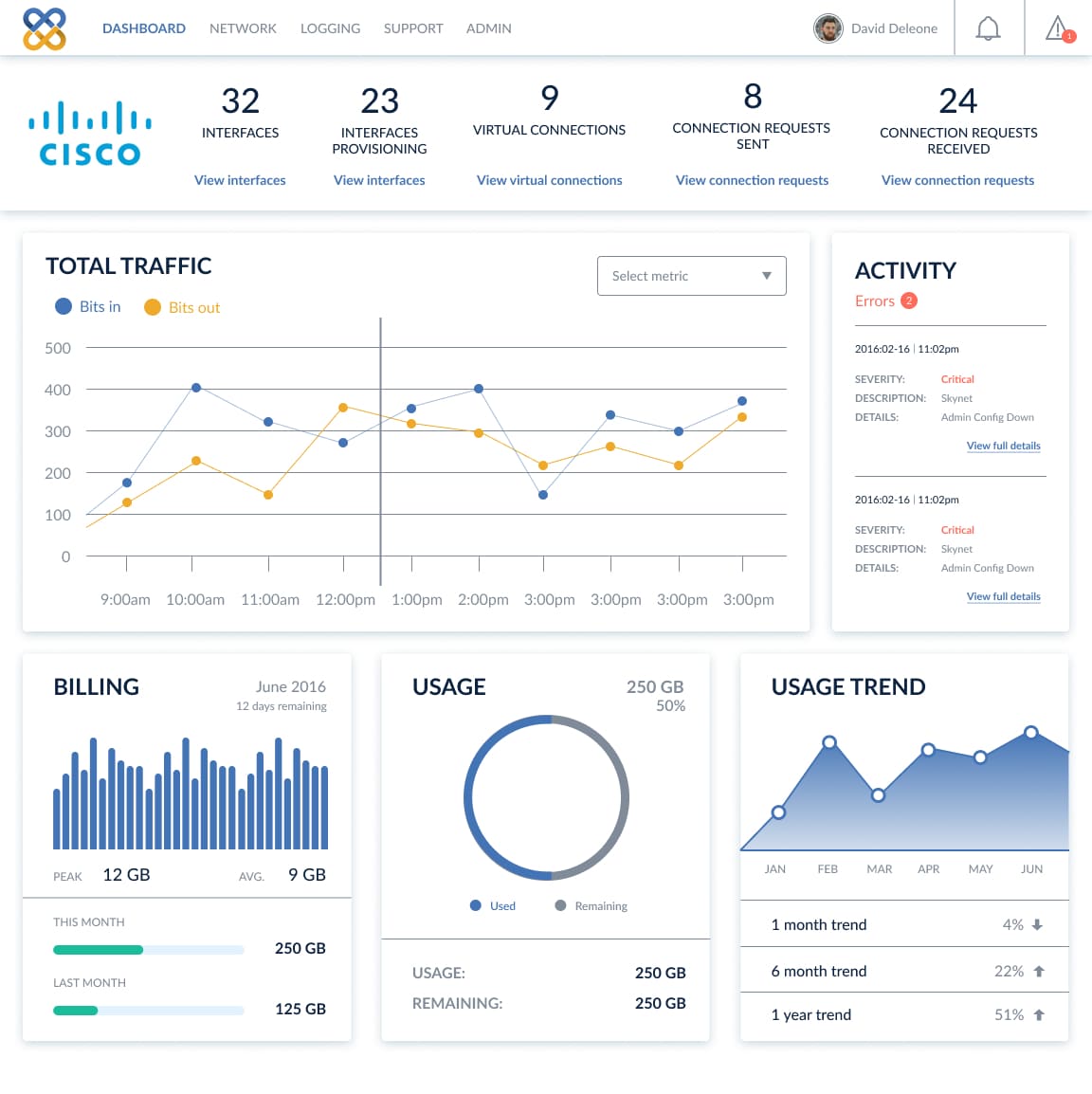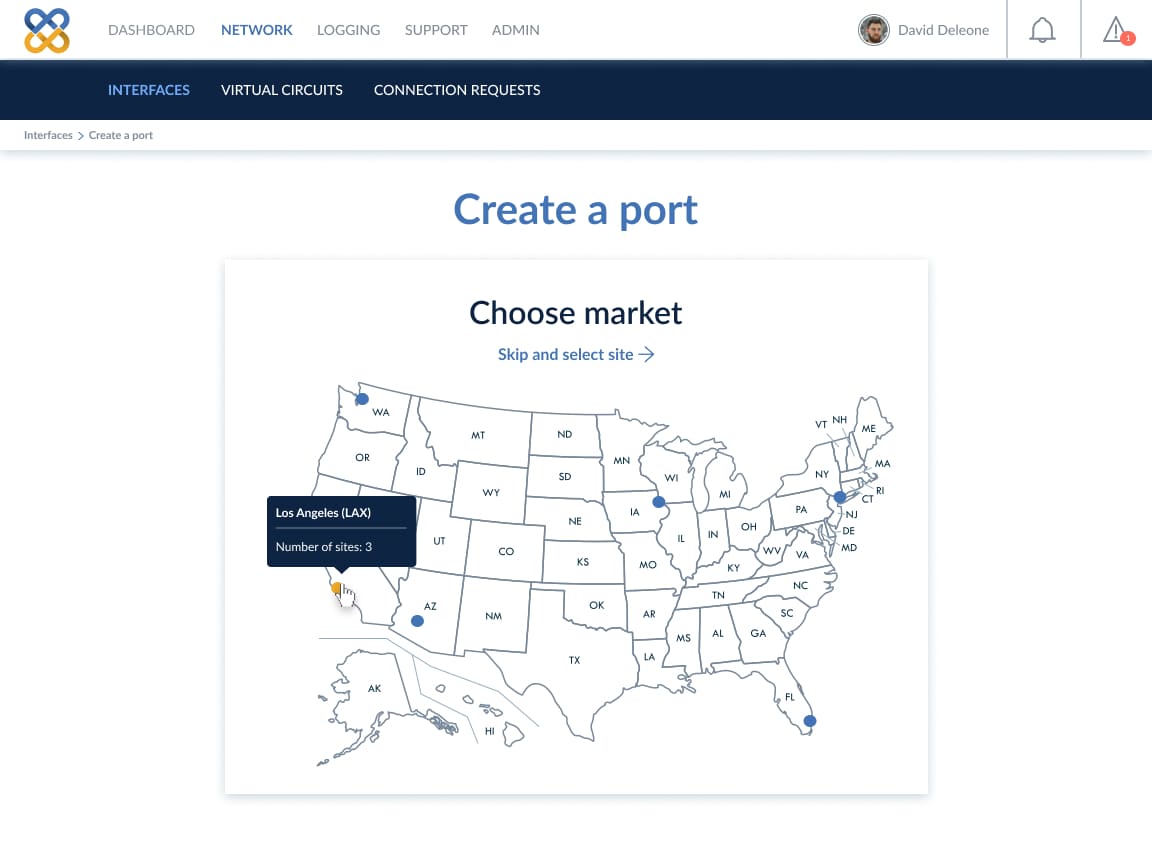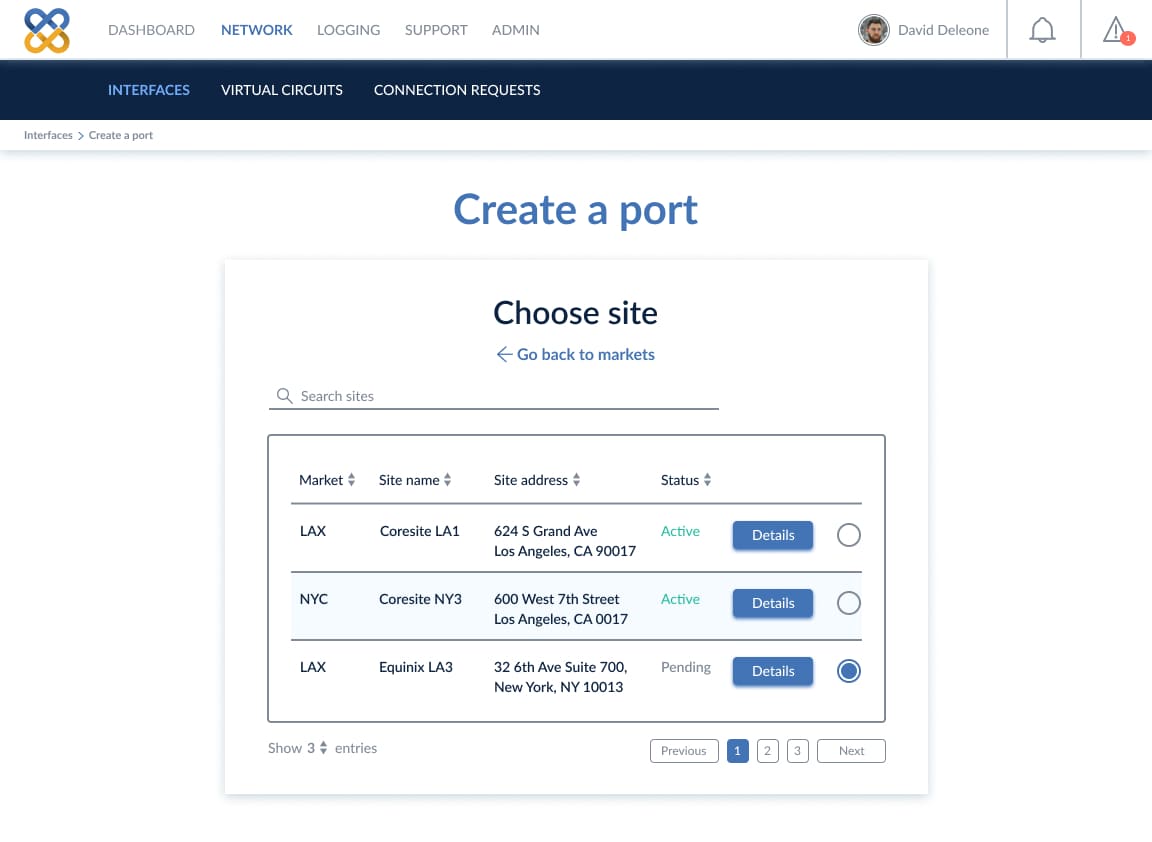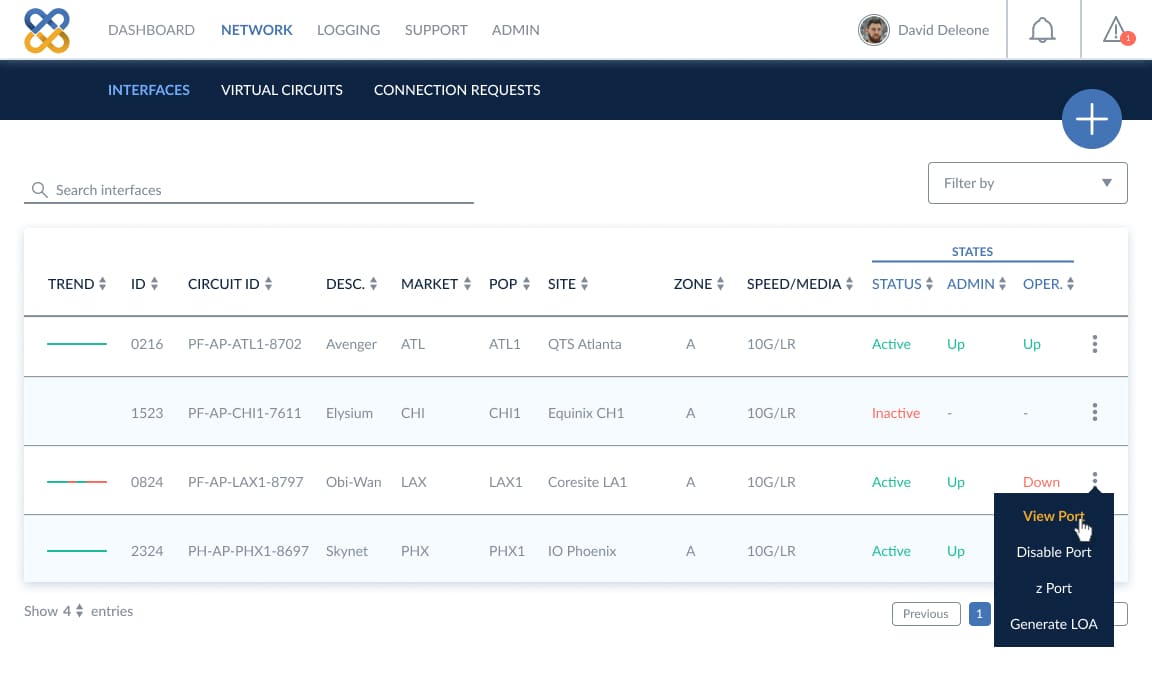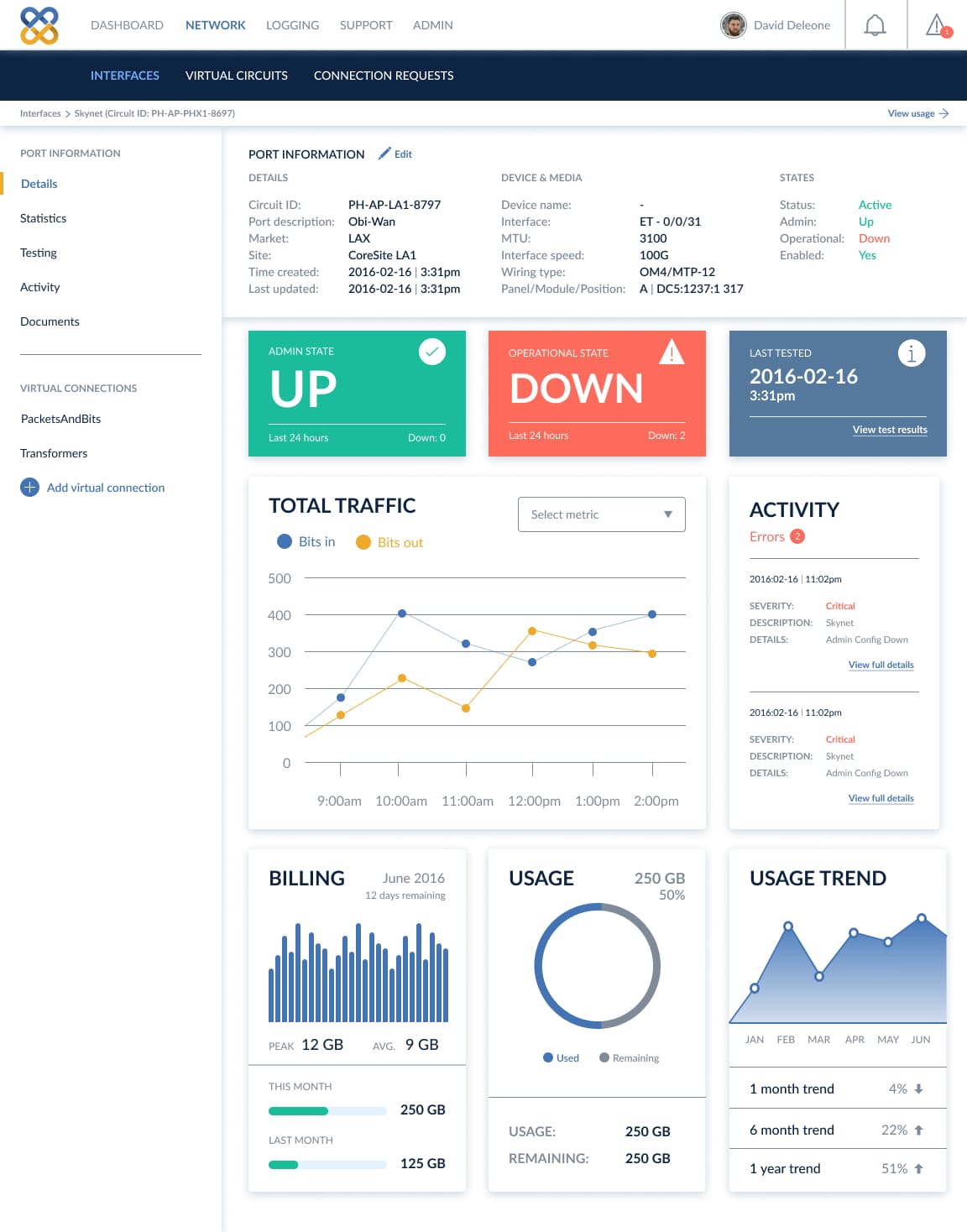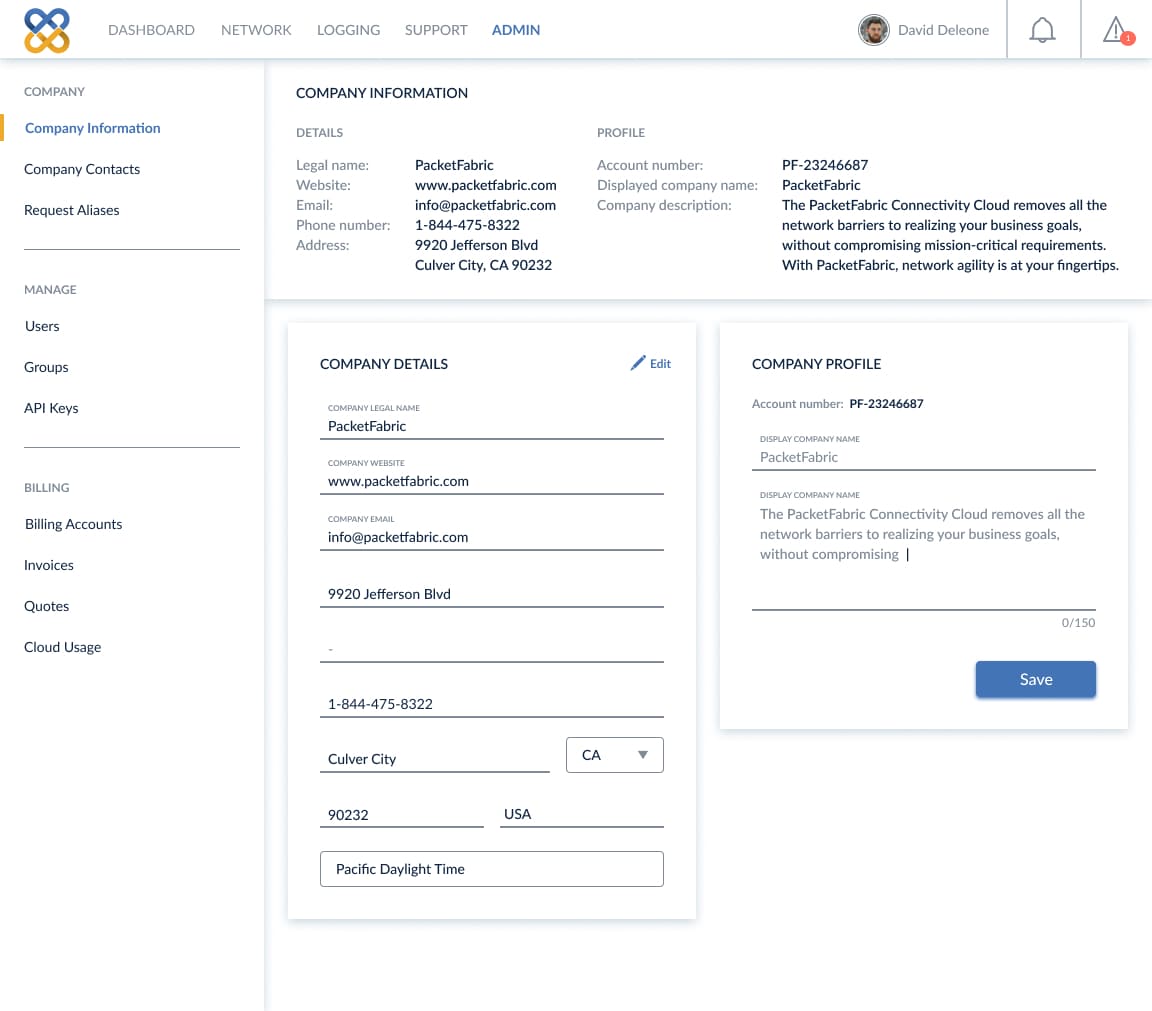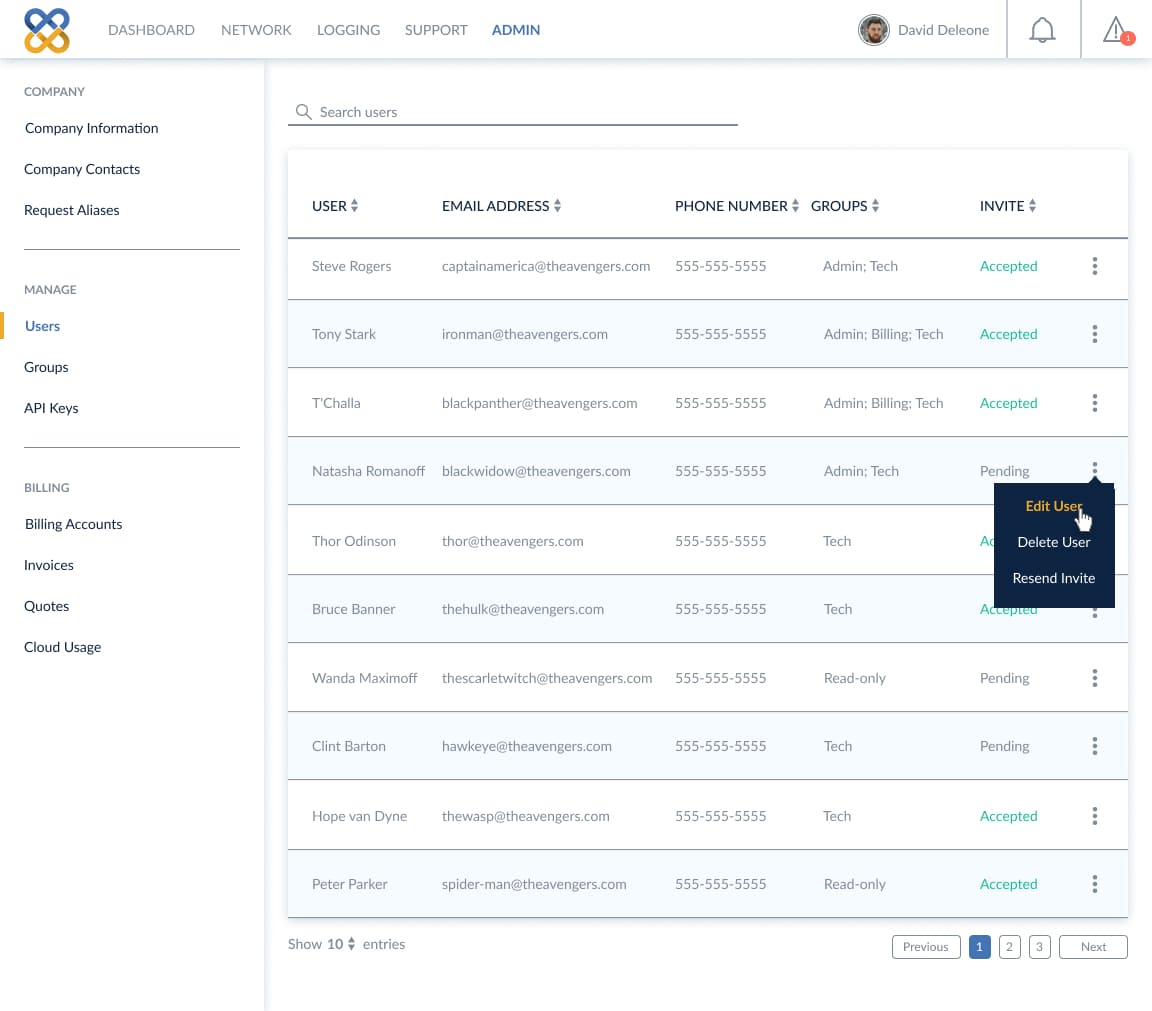I joined PacketFabric as the Lead Designer when it was just a small team of 4 founders and 2 engineers. I led the UX and UI strategy for the team.
I was the sole designer on the founding team.
I feel fortunate having had the opportunity to be part of such an exhilarating journey, and working for a startup and having a multitude of responsibilities helped me grow tremendously.
Here are some key achievements:
- Juggled many different hats. Working in an early-stage startup is both challenging and rewarding. I dedicated many hours helping to create the voice for the brand, created branding guidelines, designed a pattern library and took ownership of both the design and code for the company’s website.
- Turned an idea into a product. The ability to transform an idea into something much more tangible is a process that is both exhilarating and rewarding. I worked closely with the founders to shape the product vision and strategy. Being able to see how much PacketFabric has grown as a team and a startup was truly amazing.
- Being part of the pitch process. Another responsibility that I undertook was helping the founders build out pitch decks, which they would pitch to investors and potential customers. I was responsible for the design of slides, and editing pitch decks once the copy was finalized by the founders.

